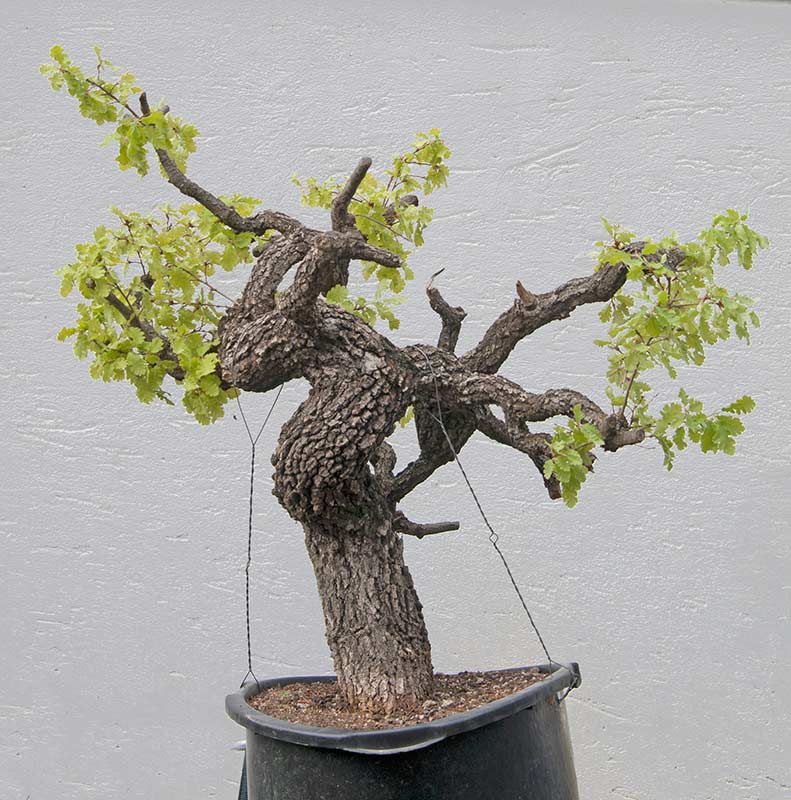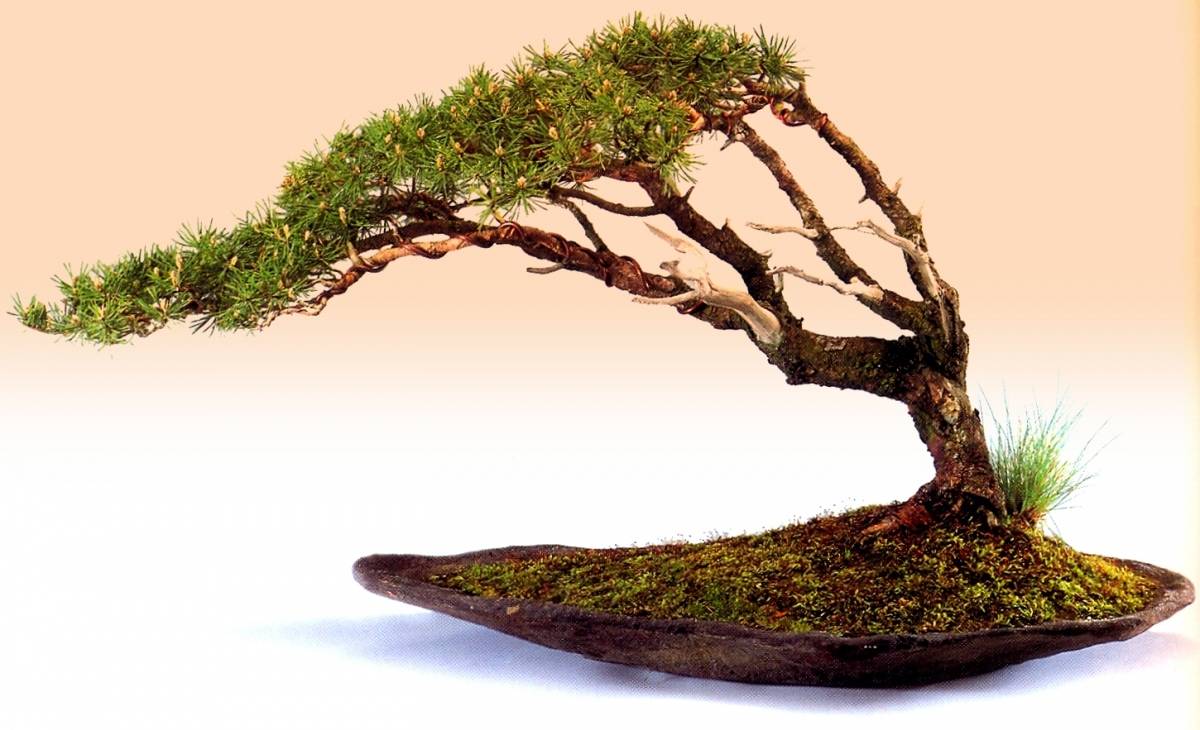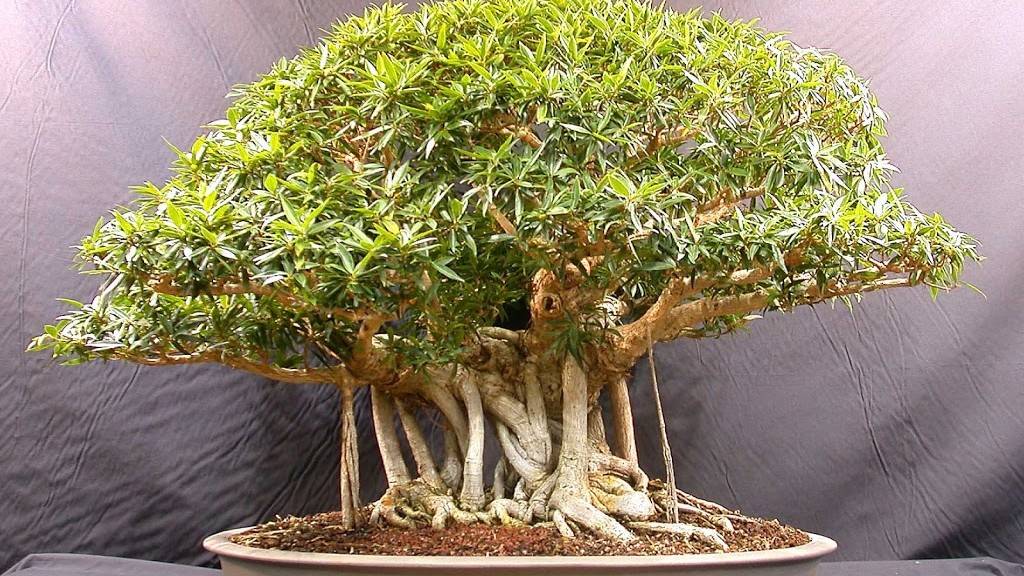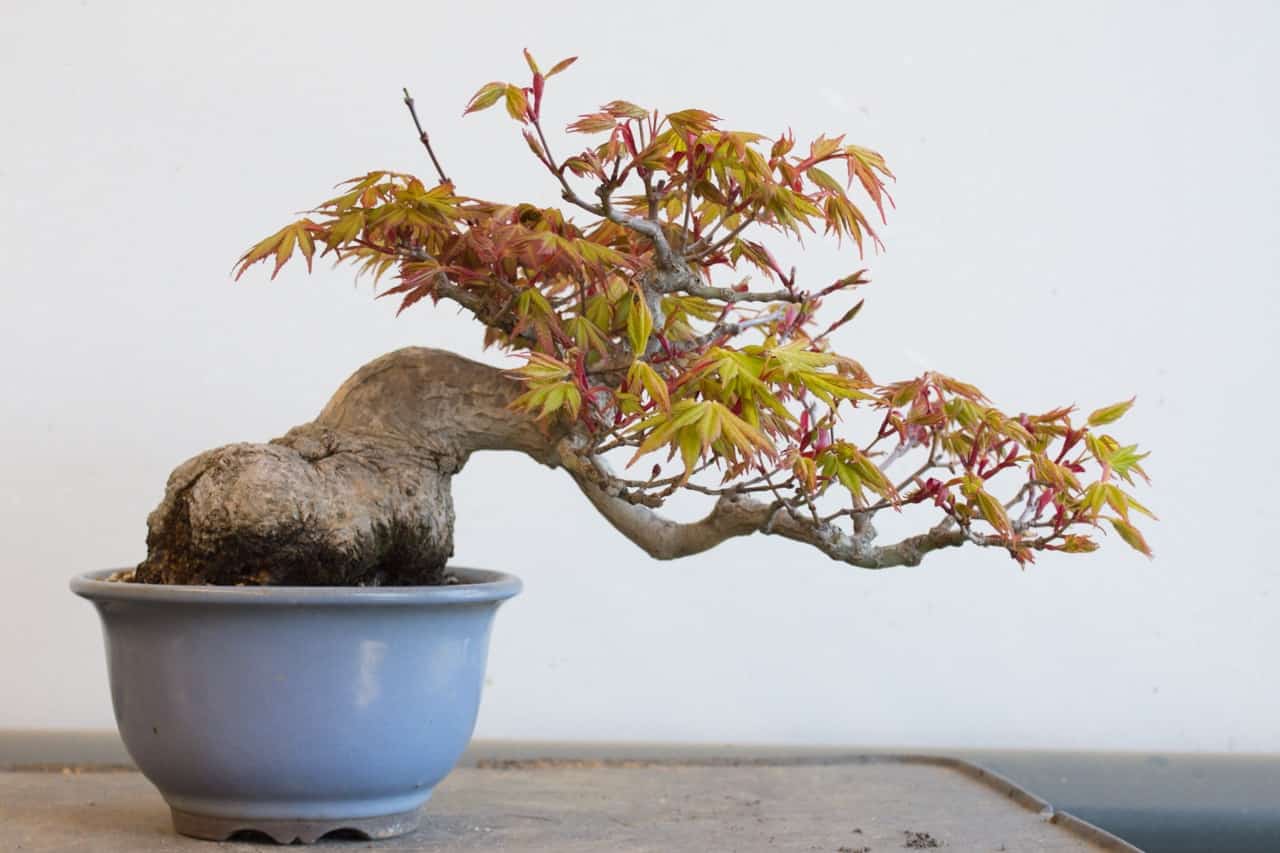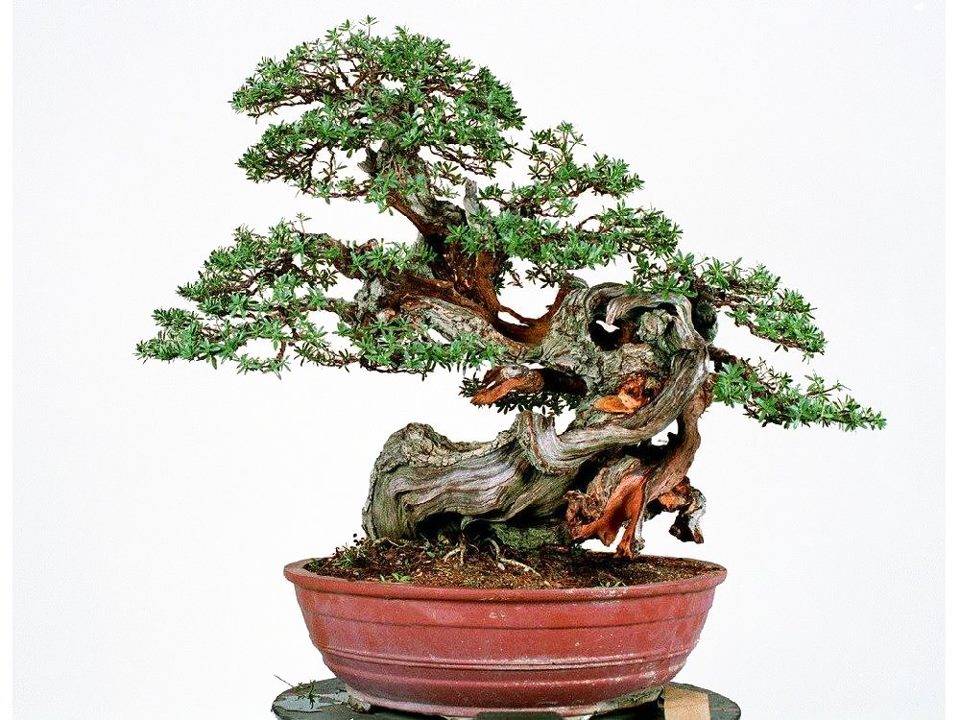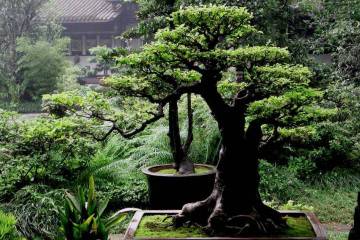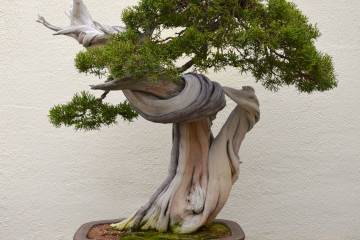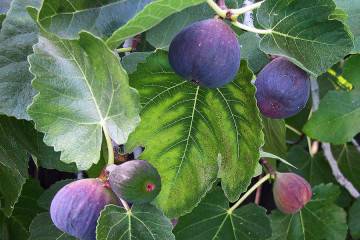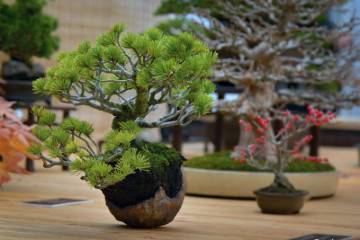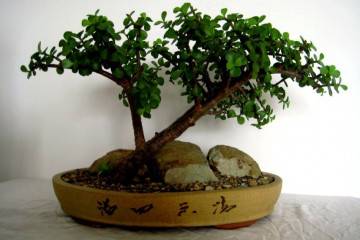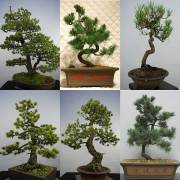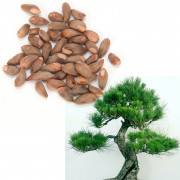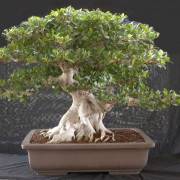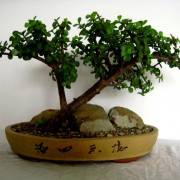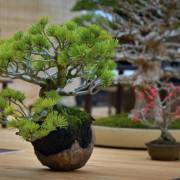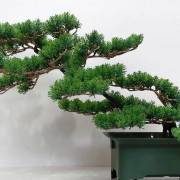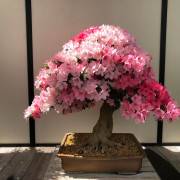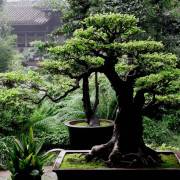Bonsai oak - self-cultivation and care
Content:
The ancient Japanese art of bonsai has long been widespread far beyond the borders of Japan. Now even novice flower growers, with sufficient patience and diligence, can grow a miniature tree at home or in the country. Bonsai oak, grown in miniature size, looks especially beautiful and majestic.
Classification
There are many varieties of bonsai.
Depending on their size, trees are classified into the following types:
- mame are the smallest plants. Their height should not exceed 20 cm;
- sekhin - slightly larger, the maximum height is 25 cm;
- kifu - trees of medium height, whose size varies from 25 to 40 cm;
- Tyukhin is a large bonsai grown up to 120 cm.
Miniature trees are also classified by trunk type and crown shape:
- erect - a tree with a powerful trunk and a developed above-ground root system. The crown of such a plant is usually formed in a conical shape;
- erect curvilinear has a bizarrely curved trunk;
- tilted, whose name speaks for itself. The trunk of this tree is tilted to one side relative to the axis.
- tree on rocks, grown with a crown hanging from stones in the form of a cascade;
- broom-shaped - a plant with a straight trunk, each branch of the crown of which is directed straight up.
How to properly grow oak bonsai? First you need to decide on the planting material. There are two planting options - from an acorn or from a branch cuttings.
Growing from seed
There is an easy way to grow bonsai from an oak acorn. To begin with, you should choose a large, even hard fruit, smooth to the touch, without chips or cracks, bright brown in color. The selected fruits are placed in a container with cold water for a day.
Further, high-quality acorns should be wrapped in wet moss or sawdust, wrapped in cling film and refrigerated for at least two months. How to grow oak bonsai at home quickly? It is important to maintain constant moisture in the bag, because if there is an excess level of moisture, the fruits will rot, and if the moss is dry, the acorn will not be able to germinate.
After 2-3 months, the germinated acorns should be removed from the refrigerator, freed from the film and nutrient material, without damaging the tender sprouted sprouts and planted in prepared soil.
Growing from cuttings
The process of growing from a cuttings is different from the method described above. It is necessary to cut a stalk from the mother tree, which is a living branch without branches and leaves, and root it in the prepared soil. In order for the stalk to take root quickly, you can use a special growth compound that can be purchased at a florist shop.
Which soil to choose
There are many questions about what to plant the seed into.Here the opinions of amateurs and professionals in growing bonsai from oak are opposite. Some believe that it should be planted in the soil, ideally in the one in which the mother tree grew. Some land can be taken in the same forest where the acorn was picked up or the cutting was cut. However, opponents of this method of cultivation rightly point out that there can be pests in natural soil that can damage delicate shoots and a weak root system.
That is why a specialized nutrient soil is a good choice for growing bonsai. Oak bonsai is quite unpretentious to the composition of the soil, so any universal nutrient mixture will be suitable for the plant.
Root pruning
After the oak is well rooted, gives the first shoots, its root system will begin to develop. It is during this period that it is important to start regular root pruning. The oak root system is one developed main root, which is, as it were, a continuation of the trunk, and many lateral, thinner and weaker branches. In order for it to be branched and strong, you should regularly remove the extra small side roots in order to gradually form several of equal strength and size, which will firmly hold the tree in a small container. This will also allow the formation of beautiful superficial roots.
Fertilizer
In order for the plant to grow strong and not susceptible to disease, it must be constantly fertilized. This is especially important in relation to bonsai, because it is grown in a flat container with a small amount of soil, and it requires a lot of nutrients. This is especially true for oak, which is a deciduous plant, which means that it consumes a large amount of nutrients during the period of active growth of greenery.
Bonsai should be fertilized year-round with organic fertilizers, depending on the season, only the frequency of top dressing changes. In spring and summer, the plant should be fertilized twice a week with watering, and in autumn and winter - once a month.
Formation
The main difficulty in bonsai art is the formation of the trunk and crown of the tree. Don't choose complex styles for oak. The optimal type of trunk for it will be a straight or inclined single-barreled, the height of the grown tree is from 40 to 80 cm. To achieve a harmonious appearance of the tree, its branches should be regularly pruned, preventing chaotic growth. It is very convenient to do this with a special bonsai pruner.
If you approach the process with a soul and pay enough attention to it, in a few years the appearance of a miniature tree will delight the eye with its harmony and originality.
In addition to the branches, each leaf should be regularly trimmed so that its size does not contrast with the size of the trunk. This must be done constantly, then over time the leaves will adapt and will themselves grow in the required sizes.
Care
In addition to pruning and feeding, regular watering is also part of the care of oak bonsai. It is imperative to observe the golden mean: do not flood the tree so that the root system does not rot, but also do not dry out, since deciduous trees tolerate aridity extremely negatively. To prevent the oak roots from drying out, you can overlay them with moss, which will perfectly retain moisture, preventing it from evaporating.
It is imperative to provide a sufficient level of fresh air in the room where the bonsai is grown. Oak cannot grow without ventilation and regular airing.
Pests and diseases
Diseases of oak bonsai are mainly associated with pests that can settle on its leaves and in the soil. Regular inspection and maintenance will allow you to notice changes on the leaves, roots and soil in time, and timely processing can save the plant from death. Aphids, caterpillars and tree beetles are parasites that can inhabit the miniature oak. Ash, thorough cleaning of the leaves and trunk will help from them. If worms appear in the soil, the plant should be transplanted immediately, because they do not just loosen the soil, but feed on the young roots of the tree.
Growing bonsai is a long and laborious process. But if everything is done correctly, then the decorative tree will live for many years, becoming a real highlight of the home interior. Having learned how to grow bonsai at home from oak, you can organize a corner of the Japanese garden even in the country.
